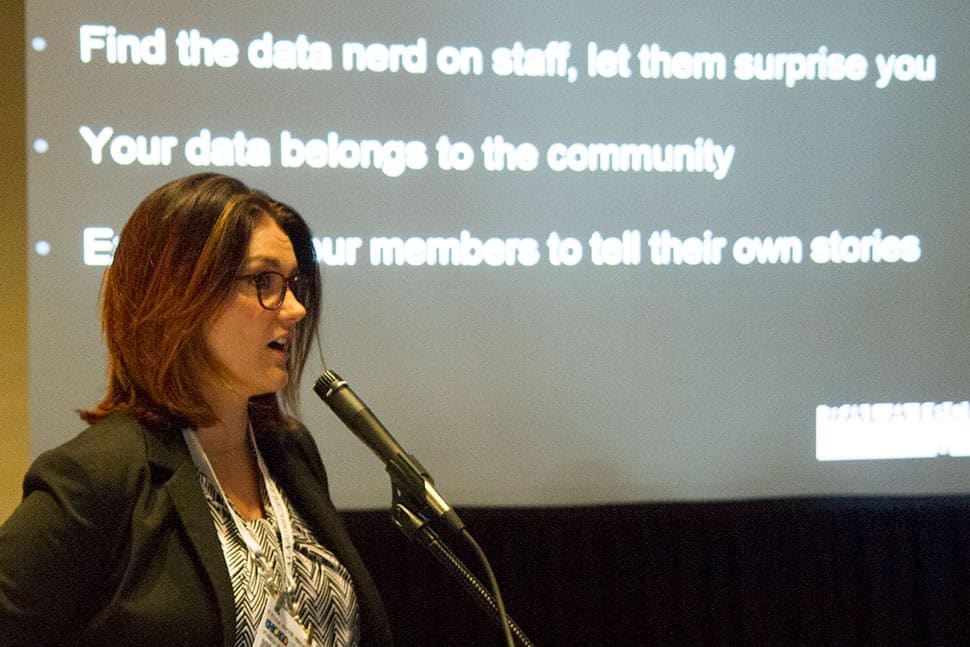
Rebecca Stavick, executive director of Do Space, shared her philosophy on how to run a successful tech space. Do Space is a community technology library in Omaha, Nebraska, that believes in empowering the community through access to technology and innovative learning experiences.
Stavick began with a focus on leadership and communication. Tech space leaders are face of the project and communication is important because it will influence staff and the community and how they feel about technology.
Stavick recommended hiring for strong soft skills over high educational levels. You can always teach someone how to 3D print but it can be harder to teach people skills. Meanwhile, hiring curious people will keep your staff and your space on the cutting edge of technology.
Do Space is a community led project with 120-150 volunteers. To create a sense of empowerment among these volunteers, the organization created branded job descriptions for them volunteers such as 3D Printing Guru.
Maintaining a strong culture is also important, since that will reduce staff turnover. Stavick’s tips included showcasing staff interests and using a collaboration platform. By getting to know all of your staff, you can use their talents and interests to your advantage. A staff member who enjoys statistics and data, for example, will likely be well-suited to the valuable work of collecting and compiling data about attendance and usage and other statistics. And don’t worry too much about whether these tasks fall perfectly into their assigned role: In her career, Stavick says, “I was successful because my leaders delegated duties beyond my job description.”
Collaboration platforms such as Slack can be a great way to share ideas and break down email silos, especially if you work in a branch library.
Management of the technology space should start with the space’s mission. Consider how it fits into your library’s mission and use that as a tool to help you get the work done. Once you know the why of your space, it’s time to help your patrons become innovators. To do this, Stavick says, “Don’t create a bunch of rules. Create a framework and trust them.”
And technology spaces can coexist happily with libraries. Traditional library services are extremely popular and libraries have always been about change and technology—so creating technology spaces are one manner of respecting your roots.

